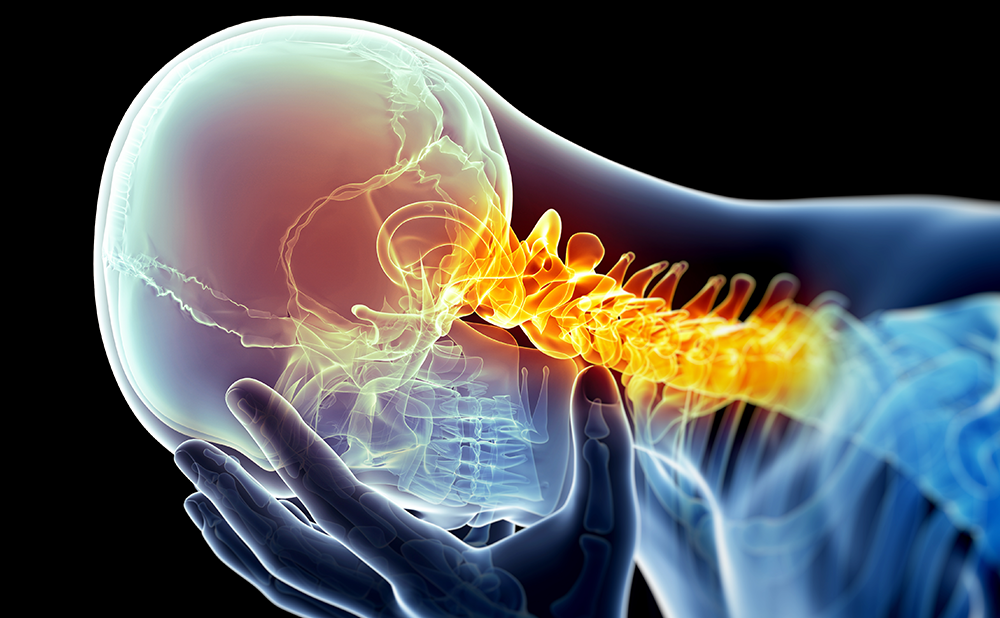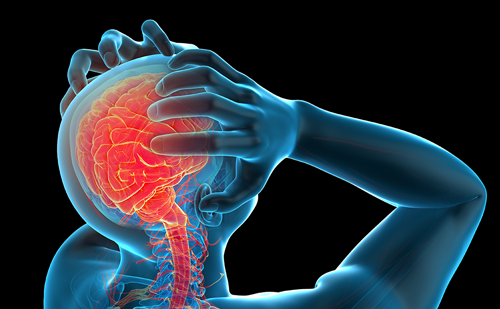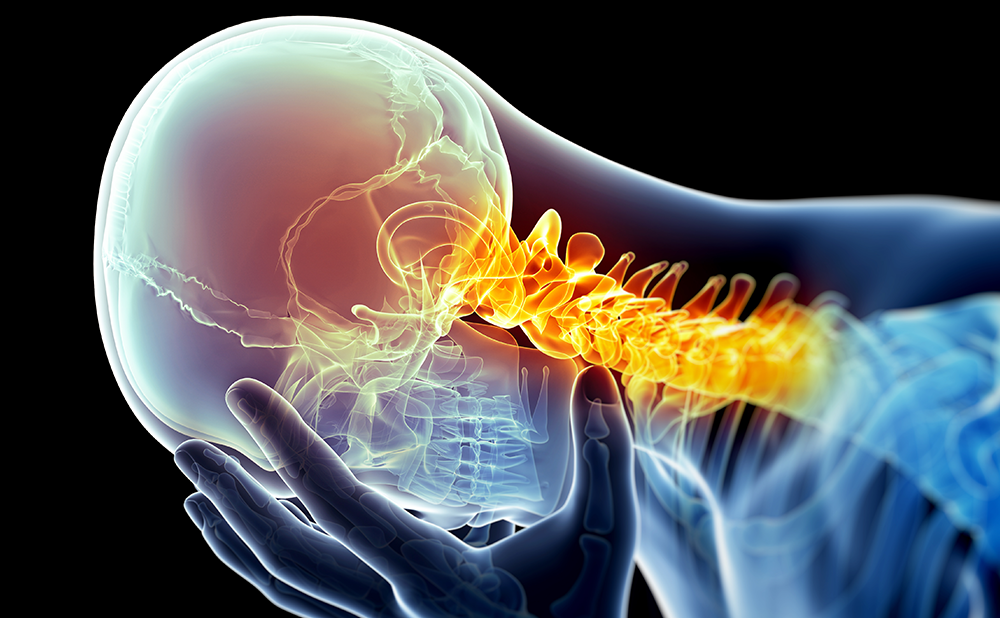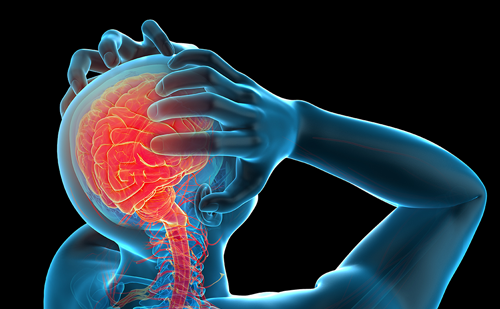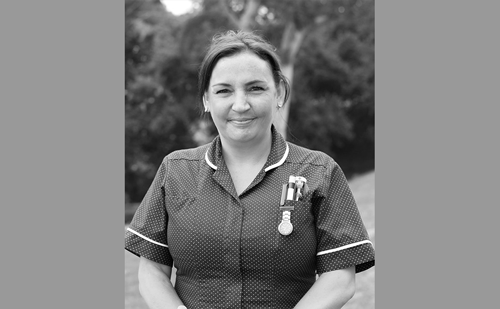This paper gives an overview of the recent guideline on the treatment of tension-type headache (TTH) published by a task force of the European Federation of Neurological Societies (EFNS).1 The guideline aimed to give evidence-based recommendations for the acute and prophylactic drug treatment of TTH. In addition, it aimed to provide a short overview of non-drug treatments for TTH based on the best performed controlled trials, reviews and meta-analyses.
This paper gives an overview of the recent guideline on the treatment of tension-type headache (TTH) published by a task force of the European Federation of Neurological Societies (EFNS).1 The guideline aimed to give evidence-based recommendations for the acute and prophylactic drug treatment of TTH. In addition, it aimed to provide a short overview of non-drug treatments for TTH based on the best performed controlled trials, reviews and meta-analyses.
TTH is classified into three subtypes according to frequency: infrequent episodic TTH, frequent episodic TTH and chronic TTH2 (see Table 1). This division may seem artificial but it has proved to be highly relevant for several reasons. First, impact on quality of life differs considerably between the subtypes. A person experiencing headache every day from the time of waking, persisting until bedtime, month in and month out, is disabled. At the other extreme, a mild headache once every other month has very little impact on health or functional ability and needs little if any medical attention. Second, the pathophysiological mechanisms may differ significantly between the subtypes; peripheral mechanisms are probably more important in episodic TTH, whereas central pain mechanisms are pivotal in chronic TTH.3 Third, treatment differs between the subtypes, with symptomatic and prophylactic treatments being more appropriate for episodic and chronic TTH, respectively. It is essential, therefore, to make a precise diagnosis, which is assisted by completion of a headache diary,4 kept for at least four weeks.
The recommendations in the guideline were based on scientific evidence from clinical trials and were agreed by consensus among the expert members of a task force of the EFNS. They considered randomised placebo-controlled trials and trials comparing different treatments for drug treatments. For non-drug treatments controlled trials were considered. The definitions of the recommendation levels followed the EFNS criteria.5 Briefly, a level A rating (established as effective, ineffective or harmful) requires at least one convincing class I study or at least two consistent, convincing class II studies. A level B rating (probably effective, ineffective or harmful) requires at least one convincing class II study or overwhelming class III evidence. A level C rating (possibly effective, ineffective or harmful) requires at least two convincing class III studies.5
Epidemiology, Clinical Aspects and Diagnosis
Population based studies have demonstrated that TTH is highly prevalent: 24–37% of the adult population have TTH several times a month; 10% have TTH weekly; and 2–3% have chronic TTH, usually lasting for the greater part of a lifetime.6,7 A recent review of the global prevalence and burden of headaches showed that the societal burden resulting from disability caused by TTH (and hence its overall cost) is greater than that of migraine.8
TTH is characterized by a bilateral, pressing, tightening pain of mild-to-moderate intensity, occurring either in short episodes of variable duration (episodic forms) or continuously (chronic form). The headache is not associated with typical features of migraine, such as vomiting, severe photophobia and phonophobia. Chronic TTH may be associated with either photophobia, phonophobia or mild nausea (see Table 1).2 The lack of accompanying symptoms and the relatively mild pain means that patients are rarely severely incapacitated by pain. TTH is the most featureless of the primary headaches and, since many secondary headaches may mimic TTH, a diagnosis of TTH requires exclusion of other organic disorders.
The diagnosis of TTH is based on the patient’s history and a normal neurological examination. The diagnosis should be confirmed by means of a headache diary.4 The most difficult differential diagnosis is between TTH and mild migraine. The diary may also reveal triggers and medication overuse. It also will establish the baseline against which to measure the efficacy of treatments. Identification of a high intake of analgesics is essential because medication overuse requires specific treatment.9 Paraclinical investigations, in particular brain imaging, are necessary if secondary headache is suspected (e.g. the headache characteristics are atypical); if the course of headache attacks changes; or if persistent neurological or psychopathological abnormalities are present. Significant co-morbidity – e.g. anxiety or depression – should be identified and treated concomitantly. It should be explained to the patient that frequent TTH is only seldomly cured, but that meaningful improvements often can be obtained using combinations of drug and non-drug treatments.
Acute Drug Treatment of Tension-type Headache
Acute drug therapy refers to the treatment of individual attacks of headache in patients with episodic and chronic TTH. Most headaches in patients with episodic TTH are mild to moderate and the patients often can self-medicate with simple (non-opiate) analgesics (paracetamol or aspirin) or non-steroidal anti-inflammatory drugs (NSAIDs). The efficacy of simple analgesics tends to decrease with increasing frequency of the headaches. In patients with chronic TTH, the headaches are often associated with stress, anxiety and depression. Simple analgesics are usually ineffective and should be used with caution because of the risk of medication-overuse headache (MOH) when they are used regularly for more than 14 days a month. MOH is also a risk when triptans or combination analgesics are used for more than nine days a month.10 Other interventions, such as non-drug treatments and prophylactic pharmacotherapy, should be considered.
Simple Analgesics and Non-steroidal Anti-inflammatory Drugs
Paracetamol 1,000mg was significantly more effective than placebo in most,11–17 but not all,18,19 trials; three trials found no significant effect for paracetamol 500–650mg compared with placebo.11,18,20 Aspirin has consistently been reported to be more effective than placebo at doses of 1,000mg,11,21,22 500–650mg11,22–24 and 250mg.22 One study found no difference in efficacy between solid and effervescent aspirin.24
Doses of ibuprofen at 800mg,23 400mg14,15,23,25,26 and 200mg27 are more effective than placebo, as are ketoprofen 50mg,18,27 25mg17,19,27 and 12.5mg.19 Diclofenac 25mg and 12.5mg have been reported to be effective.25 There are no TTH trials of the higher doses of 50–100mg proved effective in migraine. Naproxen 375mg16 and 550mg20,28 also have been shown to be effective.
Optimal Dosing
One study demonstrated a significant dose–response relationship for aspirin, with 1,000mg being superior to 500mg and 500mg being superior to 250mg.22 Ketoprofen 25mg tends to be more effective than 12.5mg,19 while one study found very similar effects of ketoprofen 25mg and 50mg.27 Paracetamol 1,000mg seems to be superior to 500mg, since only the former dose has been shown to be effective. In the absence of any evidence about a drug’s efficacy, the most effective dose that is well tolerated by the patient should be chosen. Suggested doses are presented in Table 2.
Comparison of Simple Analgesics
NSAIDs have been reported to be more effective than paracetamol in most,14,15,18–20 but not all,11,16,17 studies. It has not been demonstrated that any particular NSAID is superior to any other.21,23,25,27,29 NSAIDs have more gastrointestinal side effects than paracetamol, but the use of large amounts of paracetamol may cause liver injury. Among NSAIDs, ibuprofen seems to have the most favourable side-effect profile.30
Combination Analgesics
The efficacy of simple analgesics and NSAIDs is increased by combination with caffeine 64–200mg.12,13,31–34 There are no comparative studies examining the efficacy of combinations containing codeine. It is clinically well-known that caffeine withdrawal can cause headache, and chronic daily headache has been reported to be associated with use of over-the-counter caffeine combination products.35 It is probable, therefore, that combinations of simple analgesics or NSAIDs with caffeine are more likely to induce MOH than simple analgesics or NSAIDs alone. Combinations of simple analgesics with codeine or barbiturates should not be used, because the latter increase the risk of developing MOH.35
Triptans, Muscle Relaxants and 0pioids
Triptans most likely do not have a clinically relevant effect in patients with TTH,36,37 neither have muscle relaxants demonstrated efficacy in episodic TTH.38 Use of opioids increases the risk of developing MOH.35
Conclusions
Simple analgesics and NSAIDs are the mainstays of acute therapy of TTH (see Table 2). Paracetamol 1,000mg is probably less effective than the NSAIDs, but has a better gastric side-effect profile.39 Ibuprofen 400mg may be the drug of choice among the NSAIDs, because of its favourable gastrointestinal side-effect profile compared with other NSAIDs.39 Combination analgesics containing caffeine are more effective than simple analgesics or NSAIDs alone, but are regarded by some experts to be more likely to induce MOH.40 Physicians should be aware of the risk of patients developing MOH as a result of frequent and excessive use of all types of analgesics in acute therapy.9 Triptans, muscle relaxants and opioids are not recommended for the treatment of TTH.
Recommendations
Simple analgesics and non-steroidal anti-inflammatory drugs are recommended for treatment of episodic (acute) TTH. Combination analgesics containing caffeine are drugs of second choice. It is crucial to avoid frequent and excessive use of analgesics to prevent the development of medication-overuse headache.
Prophylactic Drug Treatment of Tension-type Headache
Prophylactic pharmacotherapy should be considered in patients with chronic TTH, and it can be considered in patients with very frequent episodic TTH. Co-morbid disorders, e.g. overweight or depression, should be taken into account.
Amitriptyline
Lance and Curran have reported that amitriptyline 10–25mg three times daily is effective against TTH.41 Diamond and Baltes found amitriptyline 10mg/day to be effective, but not 60mg/day,42 and amitriptyline 75mg/day reduced the duration of headache in the final week of a six-week study.43 In another study, there was no difference in the size of the effect with amitriptyline 50–75mg/day, amitriptylinoxide 60–90mg/day and placebo.44 Bendtsen et al.45 found that amitriptyline 75mg daily reduced the area under the headache curve (calculated as headache duration multiplied by headache intensity) by 30% compared with placebo, which was highly significant. Holroyd et al.46 treated patients with antidepressants (83% took amitriptyline median dose 75mg/day and 17% took nortriptyline median dose 50mg/day) and compared the results with stress management therapy and with a combination of stress management and antidepressant treatment. After six months, all three treatments were approximately 30% more effective than placebo at reducing the headache index.
Amitriptyline should be started at low dosages (10–25mg/day) and titrated by 10–25mg weekly until the patient either achieves a good therapeutic effect or encounters side effects. It is important that patients are informed that this is an antidepressant agent which has an independent action on pain. The maintenance dose is usually 30–75mg daily administered one to two hours before bedtime to help to circumvent any sedative effects. The effect is not related to the presence of depression.45 A significant effect with amitriptyline may be observed in the first week of treatment at the therapeutic dose.45 If the patient does not respond after four weeks on maintenance dose, it is therefore advisable to switch to other prophylactic therapy. The side effects of amitriptyline include dry mouth, drowsiness, dizziness, obstipation and weight gain.
Other Antidepressants
The tricyclic antidepressant clomipramine 75–150mg/day47 and the tetracyclic antidepressants maprotiline 75mg/day48 and mianserin 30–60mg/day47 have been reported to be more effective than placebo. Interestingly, some of the newer more selective antidepressants with action against serotonin and noradrenaline seem to be as effective as amitriptyline but have the advantage of being tolerated at the doses required for treatment of a concomitant depression. Thus, the noradrenergic and specific serotonergic antidepressant mirtazapine 30mg/day reduced the headache index by 34% more than placebo in difficult-to-treat patients without depression, including patients refactory to amitriptyline.49 The efficacy of mirtazapine was found to be comparable to that of amitriptyline.45 A systematic review concluded that the two treatments may be equally effective for the treatment of chronic TTH.50
The serotonin and noradrenaline reuptake inhibitor venlafaxine 150mg/day51 reduced headache days from 15 to 12 per month in a mixed group of patients with either frequent episodic or chronic TTH. By contrast, selective serotonin reuptake inhibitors (SSRIs) have not been found to be effective.45,52,53 The major side effects of mirtazapine are drowsiness and weight gain, while those of venlafaxine are vomiting, nausea, dizziness and loss of libido.
Miscellaneous Agents
There have been conflicting results for treatment with the muscle relaxant tizanidine.48,54 Botulinum toxin has been extensively studied but a systematic review concluded that it is is likely to be ineffective or harmful for the treatment of chronic TTH.50,55–65
Conclusions
Amitriptyline has a clinically relevant prophylactic effect in patients with chronic TTH and should be the drug of first choice (see Table 3). Mirtazapine or venlafaxine are probably effective, while the older tricyclic and tetracyclic antidepressants clomipramine, maprotiline and mianserin are possibly effective.
Recommendations
Amitriptyline is the first choice drug for prophylaxis in chronic TTH. Mirtazapine and venlafaxine are second choice drugs and should be considered if amitriptyline is not effective or not tolerated. Discontinuation should be attempted every six to 12 months. The physician should keep in mind that the efficacy of preventive drug therapy in TTH is often modest, and that the benefits of treatment should outweigh the side effects.
Non-pharmacologic Treatment of Tension-type Headache
Information, Reassurance and Identification of Trigger Factors
Non-drug management should be considered for all patients with TTH and is widely used; however, the scientific evidence for efficacy of most treatment modalities is sparse.66–69 The very fact that a physician takes the problem seriously may have a therapeutic effect, particularly if the patient is concerned about serious disease (e.g. a brain tumour) and can be reassured by a thorough examination. The physician should attempt to identify triggers, since coping with triggers may be of value.70 The most often reported triggers for TTH are stress (mental or physical), irregular or inappropriate meals, high intake or withdrawal of coffee and other caffeine-containing drinks, dehydration, sleep disorders, too much or too little sleep, reduced or inappropriate physical exercise, psycho-behavioural problems and variations during the female menstrual cycle and hormonal substitution.71–73
Information about the nature of the disease is important. It can be explained that muscle pain can lead to a disturbance of the brain’s pain-modulating mechanisms,3,74,75 so that normally innocuous stimuli are perceived as painful, with secondary perpetuation of muscle pain and risk of anxiety and depression. Long-term prognosis was found to be favourable in a population-based 12-year epidemiological follow-up study, since approximately half of all individuals with frequent or chronic TTH had remission of their headaches.76 It is not known whether the same is true for individuals who seek medical consultation.
Psycho-behavioural Treatments
Electromyograph Biofeedback
The aim of EMG biofeedback is to help the patient to recognise and control muscle tension by providing continuous feedback about muscle activity. Sessions typically include an adaptation phase, baseline phase, training phase (where feedback is provided) and a self-control phase, where the patient practices controlling muscle tension without the aid of feedback.77 A recent extensive and thorough meta-analysis including 53 studies concluded that biofeedback has a medium-to-large effect. The effect was found to be long-lasting and enhanced by combination with relaxation therapy.78 The majority of the studies included employed EMG-biofeedback. It was not possible to draw reliable conclusions as to whether the effect differed between patients with episodic and chronic TTH.
Cognitive Behavioural Therapy
The aim of cognitive behavioural therapy is to teach the patient to identify thoughts and beliefs that generate stress and aggravate headaches. These thoughts are then challenged, and alternative adaptive coping self-instructions are considered.77 One study found cognitive behavioural therapy, or treatment with tricyclic antidepressants or a combination of the two to be better than placebo, with no significant difference between treatments.46 Another study reported no difference between cognitive behavioural therapy and amitriptyline.79 cognitive behavioural therapy may be effective but there is no convincing evidence.50,68
Relaxation Training
The goal of relaxation training is to help the patient to recognise and control tension as it arises in the course of daily activities. Relaxation training involves a range of affective, cognitive and behavioural techniques, such as breathing exercises and meditation. A recent review concluded that there is conflicting evidence that relaxation is better than no treatment, waiting list or placebo.68
Non-invasive Physical Therapy
Physical therapy is widely used for the treatment of TTH and includes the improvement of posture, massage, spinal manipulation, oromandibular treatment, exercise programmes, hot and cold packs, ultrasound and electrical stimulation, but the majority of these modalities have not been properly evaluated.80 Active treatment strategies are generally recommended.80 Exercise,81 physiotherapy,82 a combination of various techniques such as massage, relaxation and home-based exercises83 and craniocervical training84 have all been reported to be effective. There is a huge contrast between the widespread use of physical therapies and the lack of robust scientific evidence for supporting their efficacy.67,80,85,86
Acupuncture and Nerve Block
The prophylactic effect of acupuncture has been investigated in several trials in patients with TTH with conflicting results.50,69,82,87–96 Taken together, the available evidence suggests that acupuncture could be a valuable option for patients who are suffering from frequent TTH,69 but more research is needed before final conclusions can be drawn.
Conclusions
EMG-biofeedback has an effect in TTH, while cognitive behavioural therapy and relaxation training may have an effect in TTH, but at this moment there is no convincing evidence to support this. These treatments are relatively time-consuming, but unfortunately there are no documented guidelines for which psycho-behavioural treatment(s) to choose for the individual patient. Therefore until scientific evidence is provided common sense must be used. It is likely, therefore, that cognitive behavioural therapy will be most beneficial for the patient where psycho-behavioural problems or affective distress play a major role, while biofeedback or relaxation training may be preferable for the tense patient. Physical therapy and acupuncture may be valuable options for patients with frequent TTH, but there is no robust scientific evidence for their efficacy.
Recommendations
Non-drug management should always be considered, although the scientific basis is limited. EMG biofeedback has a documented effect in TTH, while cognitive behavioural therapy and relaxation training most likely are effective, but there is no convincing evidence. Information, reassurance and identification of trigger factors also may be rewarding. Physical therapy and acupuncture may be valuable options for patients with frequent TTH. ■


